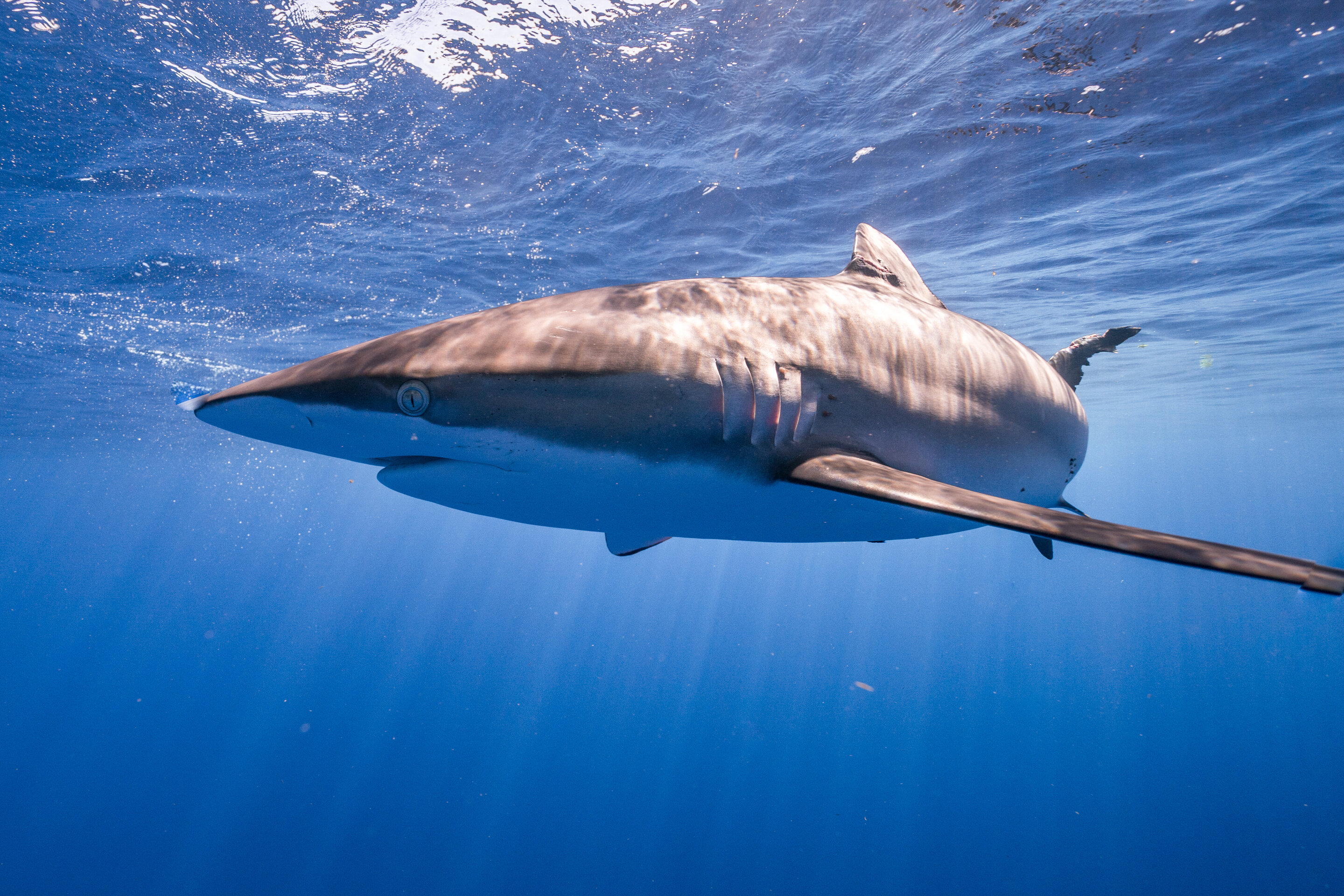#Silky sharks find hope in Atlantic, remain targets in Indo-Pacific

“#Silky sharks find hope in Atlantic, remain targets in Indo-Pacific”

New research shows that conservation efforts in the Atlantic Ocean may be working for one of the most popular—and endangered—species that ends up in the global shark fin trade.
Florida International University (FIU) postdoctoral researcher Diego Cardeñosa led a new study in collaboration with scientists in Hong Kong that uses DNA analysis to track where fins in the global shark fin trade originate. They focused on silky sharks (Carcharhinus falciformis)—the second most common species found in the fin trade.
Testing revealed 99.8 percent of the fins sampled from retail markets in Hong Kong and China originated from the Indo-Pacific Ocean. Virtually none came from the Atlantic Ocean, which provides the first evidence that conservation efforts could be making an impact.
According to FIU research, around 100 million sharks are killed every year. Nearly one-third of the shark species in the global shark fin trade are at risk of extinction.
Open ocean sharks, like silky sharks, face a considerable risk of overexploitation because they get caught in nets and longlines set by fishing fleets targeting tuna. High demand for shark fins in Asia means that although they are considered accidental by-catch, they are by-catch worth keeping.
Silky sharks are protected under Convention on International Trade in Endangered Species of Wild Fauna and Flora (CITES)—an international agreement protecting animals and plants from overexploitation in international trade. Listed in Appendix II, all trade of these sharks requires permits certifying they were legally caught, catch is sustainable, and traceable through the supply chain.
The Regional Fisheries Management Organizations oversees fishing regulations and shark management decisions. In 2011, one of these organizations—the International Commission for the Conservation of Atlantic Tuna (ICCAT)—prohibited the fishing, retention and transshipment of silky sharks by all fisheries operating under its jurisdiction. Only developing nations are allowed to fish for these sharks as a source of food.
“This study shows that there is good news for ICCAT and the Atlantic silkies,” said Cardeñosa, who was recently named a Distinguished Postdoctoral Scholar in FIU’s College of Arts, Sciences & Education. “While it doesn’t necessarily mean that the Atlantic population is recovering or that fishing mortality is decreasing, it’s a good assessment that there’s high compliance with the retention and export ban by ICCAT parties.”
The long-term goal of Cardeñosa’s research is to provide information about where shark fins originate in order to better direct more concentrated shark conservation efforts and fisheries management. This study emphasizes the need for increased monitoring, as well as better implementation of CITES regulations. The reality is illegal, unreported trade continues to happen.
In fact, earlier this year Hong Kong customs officials intercepted an illegal shipment lacking proper CITES documentation from Ecuador that included silky and pelagic thresher shark fins. The secret tool behind this historic seizure of shark fins was a DNA testing kit co-developed by Cardeñosa and Demian Chapman, an FIU marine scientist in the Institute of Environment. Created with funding from the Paul G. Allen Family Foundation, the tool is being used in airports and shipping ports to help customs officials identify protected shark species.
“Understanding which species are most prevalent in the shark fin trade can help identify the species in need of conservation intervention,” Cardeñosa said. “Tracing the populations of origin can help identify the key management jurisdictions that can lead proper interventions.”
The research is supported by the Pew Charitable Trusts and the Pew Fellowship Program. The findings were published in Conservation Letters.
Eastern Pacific is a major supply chain for illegal shark fin trade, researchers find
Diego Cardeñosa et al. Indo‐Pacific origins of silky shark fins in major shark fin markets highlights supply chains and management bodies key for conservation, Conservation Letters (2020). DOI: 10.1111/conl.12780
Citation:
Silky sharks find hope in Atlantic, remain targets in Indo-Pacific (2020, December 9)
retrieved 9 December 2020
from https://phys.org/news/2020-12-silky-sharks-atlantic-indo-pacific.html
This document is subject to copyright. Apart from any fair dealing for the purpose of private study or research, no
part may be reproduced without the written permission. The content is provided for information purposes only.
If you liked the article, do not forget to share it with your friends. Follow us on Google News too, click on the star and choose us from your favorites.
For forums sites go to Forum.BuradaBiliyorum.Com
If you want to read more Like this articles, you can visit our Science category.



